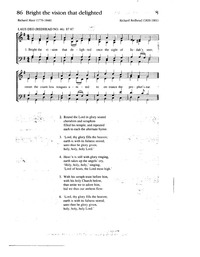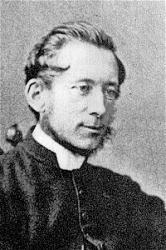


Author: Richard Mant, 1776-1848 Hymnal: Complete Anglican Hymns Old and New #86 (2000) Meter: 8.7.8.7 Lyrics: 1 Bright the vision that delighted
once the sight of Judah's seer;
sweet the countless tongues united
to entrance the prophet's ear.
2 Round the Lord in glory seated
cherubim and seraphim
filled his temple, and repeated
each to each the alternate hymn:
3 'Lord, thy glory fills the heaven;
earth is with its fulness stored;
unto thee be glory given,
holy, holy, holy Lord.'
4 Heav'n is still with glory ringing,
earth takes up the angels' cry,
'Holy, holy, holy,' singing,
'Lord of hosts, the Lord most high.'
5 With his seraph train before him,
with his holy Church below,
thus unite we to adore him,
bid we thus our anthem flow:
6 'Lord, thy glory fills the heaven;
earth is with its fullness stored;
unto thee be glory given,
holy, holy, holy Lord.' Topics: Joy, Praise and Thanksgiving; Year B Trinity Sunday; Year C Proper 1; Years A, B, and C Christmas Day Scripture: Isaiah 6:1-3 Languages: English Tune Title: LAUS DEO (REDHEAD NO. 46)
Bright the vision that delighted

